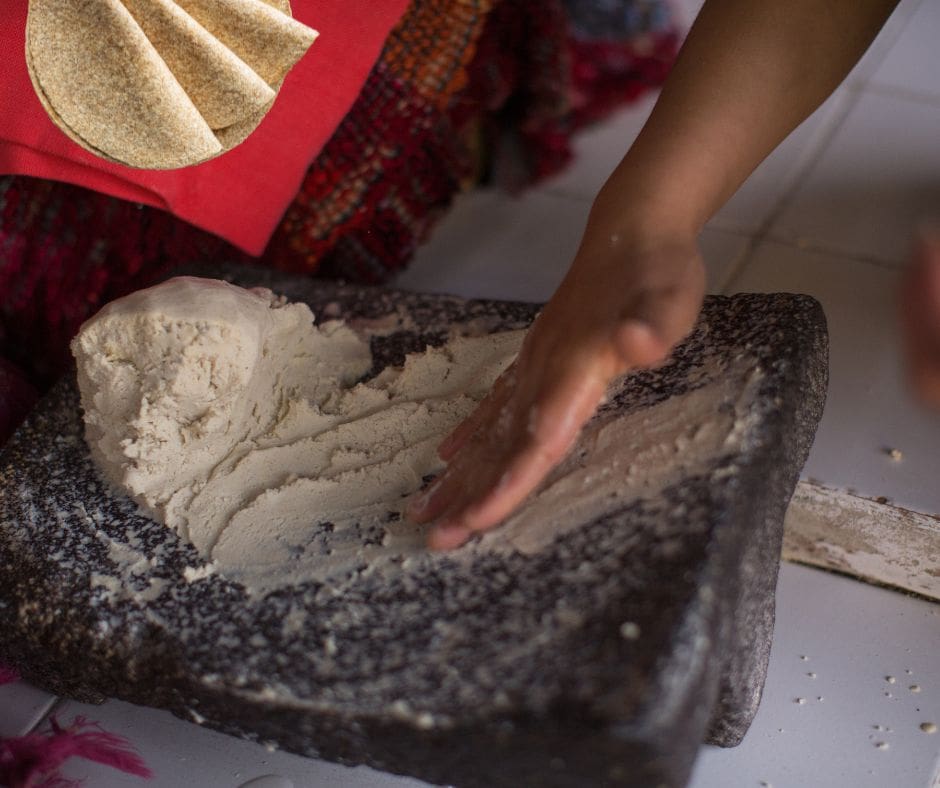Tortillas are a staple in Latin American cuisine, each country bringing its twist to this beloved food. While the basic ingredients might remain consistent, the methods of preparation and cultural significance vary greatly across the region. This article explores the tradition of making tortillas, highlighting the unique variations found in different Latin countries, and delves into Costa Rica’s tortilla traditions.
The Heart of Latin American Cuisine: Tortillas
Tortillas are more than just food in Latin America; they are an integral part of the cultural and culinary heritage. Traditionally made from corn or wheat, tortillas serve as a versatile base for many dishes, from simple snacks to elaborate meals.
Mexico: The Birthplace of the Corn Tortilla
Mexico is the birthplace of the corn tortilla, a tradition that dates back thousands of years to the ancient civilizations of the Aztecs and Mayans. The process begins with nixtamalization, where dried corn kernels are soaked and cooked in an alkaline solution, typically limewater. This process enhances the nutritional value of the corn and imparts a distinctive flavor. The treated corn, known as nixtamal, is then ground into masa, a dough that forms the base of the tortilla.
Mexican tortillas are thin, soft, and pliable, perfect for a variety of dishes. They are a cornerstone of Mexican cuisine, used in tacos, enchiladas, quesadillas, and more. Street vendors and home cooks alike prepare tortillas fresh daily, often using a traditional comal (a flat griddle) to cook them to perfection.
Guatemala: The Art of Hand-Pressing
In Guatemala, tortillas are typically thicker and are made entirely by hand, reflecting a deep-rooted tradition of craftsmanship. The masa is shaped into small balls and then patted into rounds using a unique hand-pressing technique, known as tortillería. This method gives Guatemalan tortillas a rustic, artisanal quality.
Guatemalan tortillas have a substantial bite and are often enjoyed with traditional dishes like pepian, a rich meat stew flavored with spices and seeds, and jocón, a chicken stew with tomatillo and cilantro. The thicker tortillas are perfect for scooping up these hearty dishes, making them a vital part of Guatemalan cuisine.
El Salvador: The Pupusa Experience
El Salvador offers a delightful twist on the traditional tortilla with pupusas. These are thick, stuffed tortillas filled with ingredients such as cheese, refried beans, and seasoned pork. Pupusas are made by shaping the masa into a flat disc, adding the filling, and then sealing it with another layer of masa before cooking on a griddle.
Pupusas are typically served with curtido, a tangy cabbage slaw with carrots and onions, and salsa roja, a mild tomato sauce. This combination creates a perfect balance of flavors and textures, making pupusas a beloved national dish and a must-try for visitors to El Salvador.
Costa Rica: Tortillas with a Tico Twist
Costa Rica, known for its diverse culinary heritage, also boasts a rich tradition of tortilla making. Costa Rican tortillas, or “tortillas Ticas,” are typically thicker than Mexican tortillas and are often made with a blend of corn and white flour. This combination gives the tortillas a unique texture and flavor that sets them apart from their regional counterparts.
The Tradition of Tortilla Palmeadas
A notable variation in Costa Rica is the “tortilla palmeada,” named for the way it’s hand-shaped using the palms. These tortillas are thick and slightly chewy, making them perfect for holding up to robust fillings. They are often enjoyed with natilla (a type of sour cream), queso blanco (a mild white cheese), or as an accompaniment to hearty dishes like olla de carne (beef stew).
Costa Rican tortillas are a staple in local markets and homes, often cooked on a traditional clay griddle known as a **comal**. The process of making tortillas is a communal activity, bringing families together to share in the preparation and enjoyment of this versatile food.
Variations Across Latin America
The differences in tortilla traditions extend beyond Mexico, Guatemala, El Salvador, and Costa Rica, reflecting the diverse cultures and histories of Latin America.
Venezuela and Colombia: Arepas and More
In Venezuela and Colombia, while the term “tortilla” might not be as prevalent, the arepa plays a similar role. Made from pre-cooked cornmeal, arepas can be grilled, baked, or fried, and stuffed with various fillings like cheese, shredded beef, and avocado.
In Venezuela, arepas are a daily staple, often served at breakfast with fillings like perico (scrambled eggs with tomatoes and onions) or queso de mano (a soft, white cheese). In Colombia, arepas are typically simpler, often just buttered and salted, but can also be stuffed with meats or cheeses for a more substantial meal.
Argentina and Uruguay: Wheat Flour Tortillas
In Argentina and Uruguay, wheat flour tortillas are more common, reflecting the influence of European cuisine. These tortillas are used to make dishes like “tortilla a la parrilla,” a grilled tortilla often stuffed with vegetables, ham, and cheese. The wheat flour gives these tortillas a softer texture and a slightly sweet flavor, making them a versatile option for both savory and sweet fillings.
Tortillas are a culinary canvas reflecting the rich diversity of Latin American culture. Each country’s unique take on this simple yet versatile food tells a story of tradition, adaptation, and community. Whether you’re enjoying a soft corn tortilla in Mexico, a thick Guatemalan hand-pressed tortilla, a stuffed Salvadoran pupusa, or a Costa Rican tortilla palmeada, you’re partaking in a beloved tradition that has been passed down through generations. So, the next time you savor a tortilla, remember the diverse and vibrant heritage it represents.






